httpv://www.youtube.com/watch?v=qQO2LGyFhpA
video: Srila Prabhupada – Gauranga Bolite Habe
By Yasodanandan Das
Sri Dhananjaya Pandita tirobhava tithi (disappearance day)
Sri Gadadhara dasa Goswami tIrobhava tithi
Sri Srinivasa acarya tirobhava tithi
Srila Prabhupada glorifies these exalted acaryas
Sri Srinivasa acarya
Books : Sri Caitanya-caritamrta – 1975 Edition : Cc. Adi-lila : Adi 7: Lord Caitanya in Five Features : Adi 7.22 : PURPORT :
People generally cannot understand the actual meaning of chanting and dancing. Describing the Gosvamis, Sri Srinivasa Acarya stated, krsnotkirtana-gana-nartana-parau: not only did Lord Caitanya Mahaprabhu and His associates demonstrate this chanting and dancing, but the six Gosvamis also followed in the next generation. The present Krsna consciousness movement follows the same principle, and therefore simply by chanting and dancing we have received good responses all over the world. It is to be understood, however, that this chanting and dancing do not belong to this material world. They are actually transcendental activities, for the more one engages in chanting and dancing, the more he can taste the nectar of transcendental love of Godhead
Books : Sri Caitanya-caritamrta – 1975 Edition : Cc. Adi-lila : Adi 10: The Trunk, Branches and Subbranches of the Caitanya Tree : Adi 10.85 : PURPORT :
In the Gaura-ganoddesa-dipika, verse 195, it is said that Srila Jiva Gosvami was formerly Vilasa-manjari gopi. From his very childhood Jiva Gosvami was greatly fond of Srimad-Bhagavatam. He later came to Navadvipa to study Sanskrit, and, following in the footsteps of Sri Nityananda Prabhu, he circumambulated the entire Navadvipa-dhama. After visiting Navadvipa-dhama he went to Benares to study Sanskrit under Madhusudana Vacaspati, and after finishing his studies in Benares he went to Vrndavana and took shelter of his uncles, Sri Rupa and Sanatana. This is described in the Bhakti-ratnakara. As far as our information goes, Srila Jiva Gosvami composed and edited at least twenty-five books. They are all very celebrated, and they are listed as follows: (1) Hari-namamrta-vyakarana, (2) Sutra-malika, (3) Dhatu-sangraha, (4) Krsnarca-dipika, (5) Gopala-virudavali, (6) Rasamrta-sesa, (7) Sri Madhava-mahotsava, (8) Sri Sankalpa-kalpavrksa, (9) Bhavartha-sucaka-campu, (10) Gopala-tapani-tika, (11) a commentary on the Brahma-samhita, (12) a commentary on the Bhakti-rasamrta-sindhu, (13) a commentary on the Ujjvala-nilamani, (14) a commentary on the Yogasara-stava, (15) a commentary on the Gayatri-mantra, as described in the Agni Purana, (16) a description of the Lord’s lotus feet derived from the Padma Purana, (17) a description of the lotus feet of Srimati Radharani, (18) Gopala-campu (in two parts) and (19-25) seven sandarbhas: the Krama-, Tattva-, Bhagavat-, Paramatma-, Krsna-, Bhakti- and Priti-sandarbha. After the disappearance of Srila Rupa Gosvami and Sanatana Gosvami in Vrndavana, Srila Jiva Gosvami became the acarya of all the Vaisnavas in Bengal, Orissa and the rest of the world, and it is he who used to guide them in their devotional service. In Vrndavana he established the Radha-Damodara temple, where we had the opportunity to live and retire until the age of sixty-five, when we decided to come to the United States of America. When Jiva Gosvami was still present, Srila Krsnadasa Kaviraja Gosvami compiled his famous Caitanya-caritamrta. Later, Srila Jiva Gosvami inspired Srinivasa Acarya, Narottama dasa Thakura and Duhkhi Krsnadasa to preach Krsna consciousness in Bengal. Jiva Gosvami was informed that all the manuscripts that had been collected from Vrndavana and sent to Bengal for preaching purposes were plundered near Visnupura, in Bengal, but later he received the information that the books had been recovered. Sri Jiva Gosvami awarded the designation Kaviraja to Ramacandra Sena, a disciple of Srinivasa Acarya’s, and to Ramacandra’s younger brother Govinda. While Jiva Gosvami was alive, Srimati Jahnavi-devi, the pleasure potency of Sri Nityananda Prabhu, went to Vrndavana with a few devotees. Jiva Gosvami was very kind to the Gaudiya Vaisnavas, the Vaisnavas from Bengal. Whoever went to Vrndavana he provided with a residence and prasada. His disciple Krsnadasa Adhikari listed all the books of the Gosvamis in his diary.
Books : Sri Caitanya-caritamrta – 1975 Edition : Cc. Adi-lila : Adi 10: The Trunk, Branches and Subbranches of the Caitanya Tree : Adi 10.91 : PURPORT :
The forefathers of Srila Raghunatha dasa Gosvami were all Vaisnavas and were very rich men. His spiritual master at home was Yadunandana Acarya. Although Raghunatha dasa was a family man, he had no attachment for his estate and wife. Seeing his tendency to leave home, his father and uncle engaged special bodyguards to watch over him, but nevertheless he managed to escape their vigilance and went away to Jagannatha Puri to meet Sri Caitanya Mahaprabhu. This incident took place in the year 1439 sakabda (A.D. 1518). Raghunatha dasa Gosvami compiled three books, named Stava-mala (or Stavavali), Dana-carita and Muktacarita. He lived a long time. For most of his life he resided at Radha-kunda. The place where Raghunatha dasa Gosvami performed his devotional service still exists by Radha-kunda. He almost completely gave up eating, and therefore he was very skinny and of weak health. His only concern was to chant the holy name of the Lord. He gradually reduced his sleeping until he was almost not sleeping at all. It is said that his eyes were always full of tears. When Srinivasa Acarya went to see Raghunatha dasa Gosvami, the Gosvami blessed him by embracing him. Srinivasa Acarya requested his blessings for preaching in Bengal, and Srila Raghunatha dasa Gosvami granted them. In the Gaura-ganoddesa-dipika (186) it is stated that Srila Raghunatha dasa Gosvami was formerly the gopi named Rasa-manjari. Sometimes it is said that he was Rati-manjari.
Books : Sri Caitanya-caritamrta – 1975 Edition : Cc. Adi-lila : Adi 10: The Trunk, Branches and Subbranches of the Caitanya Tree : Adi 10.105 : PURPORT :
When Krsnadasa Kaviraja Gosvami took permission from all the Vaisnavas before writing Sri Caitanya-caritamrta, Gopala Bhatta Gosvami also gave him his blessings, but he requested him not to mention his name in the book. Therefore Krsnadasa Kaviraja Gosvami has mentioned Gopala Bhatta Gosvami only very cautiously in one or two passages of the Caitanya-caritamrta. Srila Jiva Gosvami has written in the beginning of his Tattva-sandarbha, “A devotee from southern India who was born of a brahmana family and was a very intimate friend of Rupa Gosvami and Sanatana Gosvami has written a book that he has not compiled chronologically. Therefore I, a tiny living entity known as jiva, am trying to assort the events of the book chronologically, consulting the direction of great personalities like Madhvacarya, Sridhara Svami, Ramanujacarya and other senior Vaisnavas in the disciplic succession.” In the beginning of the Bhagavat-sandarbha there are similar statements by Srila Jiva Gosvami. Srila Gopala Bhatta Gosvami compiled a book called Sat-kriya-sara-dipika, edited the Hari-bhakti-vilasa, wrote a forword to the Sat-sandarbha and a commentary on the Krsna-karnamrta, and installed the Radharamana Deity in Vrndavana. In the Gaura-ganoddesa-dipika, verse 184, it is mentioned that his previous name in the pastimes of Lord Krsna was Ananga-manjari. Sometimes he is also said to have been an incarnation of Guna-manjari. Srinivasa Acarya and Gopinatha Pujari were two of his disciples.
Books : Sri Caitanya-caritamrta – 1975 Edition : Cc. Adi-lila : Adi 11: The Expansions of Lord Nityananda : Adi 11.13 : PURPORT :
Ten miles southwest of the Canpadanga railway station on the narrow-gauge railway line from Howrah, in Calcutta, to Amta, a village in the Hugali district, is a small town named Khanakula-krsnanagara, where the temple of Abhirama Thakura is situated. During the rainy season, when this area is inundated with water, people must go there by another line, which is now called the southeastern railway. On this line there is a station named Kolaghata, from which one has to go by steamer to Ranicaka. Seven and a half miles north of Ranicaka is Khanakula. The temple of Abhirama Thakura is situated in Krsnanagara, which is near the kula (bank) of the Khana (Dvarakesvara River); therefore this place is celebrated as Khanakula-krsnanagara. Outside of the temple is a bakula tree. This place is known as Siddha-bakula-kunja. It is said that when Abhirama Thakura came there, he sat down under this tree. In Khanakula-krsnanagara there is a big fair held every year in the month of Caitra (March-April) on the Krsna-saptami, the seventh day of the dark moon. Many hundreds and thousands of people gather for this festival. The temple of Abhirama Thakura has a very old history. The Deity in the temple is known as Gopinatha. There are many sevaita families living near the temple. It is said that Abhirama Thakura had a whip and that whoever he touched with it would immediately become an elevated devotee of Krsna. Among his many disciples, Sriman Srinivasa Acarya was the most famous and the most dear, but it is doubtful that he was his initiated disciple.
Books : Sri Caitanya-caritamrta – 1975 Edition : Cc. Adi-lila : Adi 11: The Expansions of Lord Nityananda : Adi 11.51 : PURPORT :
Sri Ramacandra Kaviraja, the son of Khandavasi Ciranjiva and Sunanda, was a disciple of Srinivasa Acarya and the most intimate friend of Narottama dasa Thakura, who prayed several times for his association. His youngest brother was Govinda Kaviraja. Srila Jiva Gosvami very much appreciated Sri Ramacandra Kaviraja’s great devotion to Lord Krsna and therefore gave him the title Kaviraja. Sri Ramacandra Kaviraja, who was perpetually disinterested in family life, greatly assisted in the preaching work of Srinivasa Acarya and Narottama dasa Thakura. He resided at first in Srikhanda but later in the village of Kumara-nagara on the bank of the Ganges.
Books : Sri Caitanya-caritamrta – 1975 Edition : Cc. Adi-lila : Adi 11: The Expansions of Lord Nityananda : Adi 11.51 : PURPORT :
Govinda Kaviraja was the brother of Ramacandra Kaviraja and youngest son of Ciranjiva of Srikhanda. Although at first a sakta, or worshiper of Goddess Durga, he was later initiated by Srinivasa Acarya Prabhu. Govinda Kaviraja also resided first in Srikhanda and then in Kumara-nagara, but later he moved to the village known as Teliya Budhari, on the southern bank of the river Padma. Since Govinda Kaviraja, the author of two books, Sangita-madhava and Gitamrta, was a great Vaisnava kavi, or poet, Srila Jiva Gosvami gave him the title Kaviraja. He is described in the Bhakti-ratnakara (Ninth Wave).
Sri Dhananjaya pandita
nityananda-priyabhrtya pandita dhananjaya
atyanta virakta, sada krsna-premamaya
The sixteenth dear servant of Nityananda Prabhu was Dhananjaya Pandita. He was very much renounced and always merged in love of Krsna.
Purport
Pandita Dhananjaya was a resident of the village in Katwa named Sitala. He was one of the twelve gopalas. His former name, according to Gaura-ganoddesa-dipika, verse 127, was Vasudama. Sitala-grama is situated near the Mangalakota police station and Kaicara post office in the district of Burdwan. On the narrow railway from Burdwan to Katwa is a railway station about nine miles from Kutwa known as Kaicara. One has to go about a mile northeast of this station to reach Sitala. The temple was a thatched house with walls made of dirt. Some time ago, the Zamindars of Bajaravana Kabasi, the Mulliks, constructed a big house for the purpose of a temple, but for the last sixty-five years the temple has been broken down and abandoned. The foundation of the old temple is still visible. There is a tulasi pillar near the temple, and every year during the month of January the disappearance day of Dhananjaya is observed. It is said that for some time Pandita Dhananjaya was in a sankirtana party under the direction of Sri Caitanya Mahaprabhu, and then he went to Vrndavana. Before going to Vrndavana, he lived for some time in a village named Sancadapancada, which is six miles south of the Memari railway station. Sometimes this village is also known as “the place of Dhananjaya” (Dhananjayera Pata). After some time, he left the responsibility for worship with a disciple and went back to Vrndavana. After returning from Vrndavana to Sitala-grama, he established a Deity of Gaurasundara in the temple. The descendants of Pandita Dhananjaya still live in Sitala-grama and look after the temple worship.Books : Sri Caitanya-caritamrta – 1975 Edition : Cc. Adi-lila : Adi 11: The Expansions of Lord Nityananda : Adi 11.31
Sri Gadadhara dasa
Books : Sri Caitanya-caritamrta – 1975 Edition : Cc. Introduction :
In the beginning of the Caitanya-caritamrta, Krsnadasa Kaviraja Gosvami writes, “I offer my respects to my spiritual masters.” He uses the plural here to indicate the disciplic succession. It is not that he offers obeisances to his spiritual master alone but to the whole parampara, the chain of disciplic succession beginning with Lord Krsna Himself. Thus the guru is addressed in the plural to show the author’s highest respect for all the Vaisnavas. After offering obeisances to the disciplic succession, the author pays obeisances to all other devotees, Godbrothers, the expansions of Godhead and the first manifestation of Krsna’s energy. Lord Caitanya Mahaprabhu (sometimes called Krsna Caitanya) is the embodiment of all of these; He is God, guru, devotee and the expansion of God. As His associate Nityananda, He is the first manifestation of energy; as Advaita, He is an incarnation; as Gadadhara, He is the internal potency; and as Srivasa, He is the marginal living entity. Thus Krsna should not be thought of as being alone but should be considered as eternally existing with all His manifestations, as described by Ramanujacarya. In the Visistadvaita philosophy, God’s energies, expansions and incarnations are considered to be oneness in diversity. In other words, God is not separate from all of these; everything together is God.
Books : Sri Caitanya-caritamrta – 1975 Edition : Cc. Introduction :
Thus Krsnadasa Kaviraja Gosvami discusses Lord Caitanya Mahaprabhu as Sri Krsna Himself, the Supreme Personality of Godhead, and Lord Nityananda as Balarama, the first expansion of Krsna. Advaitacarya, another principal disciple of Lord Caitanya Mahaprabhu’s, is accepted as an expansion of Maha-Visnu. Thus Advaitacarya is also the Lord, or, more precisely, an expansion of the Lord. The word advaita means “nondual,” and His name is such because He is nondifferent from the Supreme Lord. He is also called acarya, teacher, because He disseminated Krsna consciousness. In this way He is just like Caitanya Mahaprabhu. Although Lord Caitanya is Sri Krsna Himself, He appeared as a devotee to teach people in general how to love Krsna. Similarly, Advaitacarya appeared just to distribute the knowledge of Krsna consciousness. Thus He is also the Lord incarnated as a devotee. In the pastimes of Lord Caitanya, Krsna is manifested in five different features, and He and His associates appear as devotees of the Supreme Lord in the form of Sri Krsna Caitanya, Lord Nityananda, Advaitacarya, Sri Gadadhara, and Sri Srivasa. In all cases, Caitanya Mahaprabhu is the source of energy for all His devotees. Since this is the case, if we take shelter of Caitanya Mahaprabhu for the successful execution of Krsna consciousness, we are sure to make progress. One devotional song by Narottama dasa Thakura states, “My dear Lord Caitanya, please have mercy upon me. There is no one who is as merciful as You. My plea is most urgent because Your mission is to deliver fallen souls, and no one is more fallen than I. I beg priority.”
Books : Sri Caitanya-caritamrta – 1975 Edition : Cc. Adi-lila : Adi 1: The Spiritual Masters : Adi 1.34 : PURPORT :
Isa-bhaktan refers to the devotees of the Lord like Sri Srivasa and all other such followers, who are the energy of the Lord and are qualitatively nondifferent from Him. Isavatarakan refers to acaryas like Advaita Prabhu, who is an avatara of the Lord. Tat-prakasan indicates the direct manifestation of the Supreme Personality of Godhead, Nityananda Prabhu, and the initiating spiritual master. Tac-chaktih refers to the spiritual energies (saktis) of Sri Caitanya Mahaprabhu. Gadadhara, Damodara and Jagadananda belong to this category of internal energy.
gadadhara-panditadi–prabhura nija-sakti
tan’-sabara carane mora sahasra pranati
I offer my respectful obeisances unto the internal potencies of the Lord, of whom Sri Gadadhara Prabhu is the foremost.
Caitanya-caritamrta – 1975 Edition : Cc. Adi-lila : Adi 1: The Spiritual Masters : Adi 1.41
Books : Sri Caitanya-caritamrta – 1975 Edition : Cc. Adi-lila : Adi 3: The External Reasons for Lord Caitanya’s Appearance : Adi 3.52 : PURPORT : Sangopangastra-parsadam further indicates that Lord Caitanya is Lord Krsna. His body is always decorated with ornaments of sanda :
Sangopangastra-parsadam further indicates that Lord Caitanya is Lord Krsna. His body is always decorated with ornaments of sandalwood and with sandalwood paste. By His superexcellent beauty He subdues all the people of the age. In other descents the Lord sometimes used weapons to defeat the demoniac, but in this age the Lord subdues them with His all-attractive figure as Caitanya Mahaprabhu. Srila Jiva Gosvami explains that His beauty is His astra, or weapon, to subdue the demons. Because He is all-attractive, it is to be understood that all the demigods lived with Him as His companions. His acts were uncommon and His associates wonderful. When He propagated the sankirtana movement, He attracted many great scholars and acaryas, especially in Bengal and Orissa. Lord Caitanya is always accompanied by His best associates like Lord Nityananda, Advaita, Gadadhara and Srivasa.
Sri Caitanya-caritamrta – 1975 Edition : Cc. Adi-lila : Adi 4: The Confidential Reasons for Lord Caitanya’s Appearance : Adi 4.227-228 : TRANSLATION : Bowing down with devotion, I hold on my head the lotus feet of Advaita Acarya, Nityananda, Srivasa Pandita, Gadadhara, Svarupa Damodara, Murari Gupta, Haridasa and all the other devotees of Sri Krsna Caitanya.
Sri Caitanya-caritamrta – 1975 Edition : Cc. Adi-lila : Adi 7: Lord Caitanya in Five Features : Adi 7.4 : PURPORT : krsna-varnam tvisakrsnam sangopangastra-parsadam yajnaih sankirtana-prayair yajanti hi su-medhasah :
“In the Age of Kali, people who are endowed with sufficient intelligence will worship the Lord, who is accompanied by His associates, by performance of sankirtana-yajna.” (Bhag. 11.5.32) Sri Caitanya Mahaprabhu is always accompanied by His plenary expansion Sri Nityananda Prabhu, His incarnation Sri Advaita Prabhu, His internal potency Sri Gadadhara Prabhu and His marginal potency Srivasa Prabhu. He is in the midst of them as the Supreme Personality of Godhead. One should know that Sri Caitanya Mahaprabhu is always accompanied by these other tattvas. Therefore our obeisances to Sri Caitanya Mahaprabhu are complete when we say sri-krsna-caitanya prabhu nityananda sri-advaita gadadhara srivasadi-gaura-bhakta-vrnda. As preachers of the Krsna consciousness movement, we first offer our obeisances to Sri Caitanya Mahaprabhu by chanting this Panca-tattva mantra; then we say Hare Krsna, Hare Krsna, Krsna Krsna, Hare Hare Hare Rama, Hare Rama, Rama Rama, Hare Hare. There are ten offenses in the chanting of the Hare Krsna maha-mantra, but these are not considered in the chanting of the Panca-tattva mantra, namely, sri-krsna-caitanya prabhu-nityananda sri-advaita gadadhara srivasadi-gaura-bhakta-vrnda. Sri Caitanya Mahaprabhu is known as maha-vadanyavatara, the most magnanimous incarnation, for He does not consider the offenses of the fallen souls. Thus to derive the full benefit of the chanting of the maha-mantra (Hare Krsna, Hare Krsna, Krsna Krsna, Hare Hare Hare Rama, Hare Rama, Rama Rama, Hare Hare), we must first take shelter of Sri Caitanya Mahaprabhu, learn the Panca-tattva maha-mantra, and then chant the Hare Krsna maha-mantra. That will be very effective.


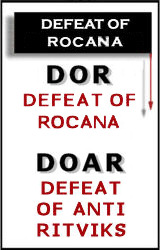
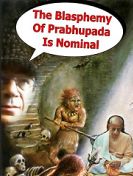
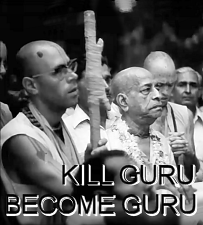
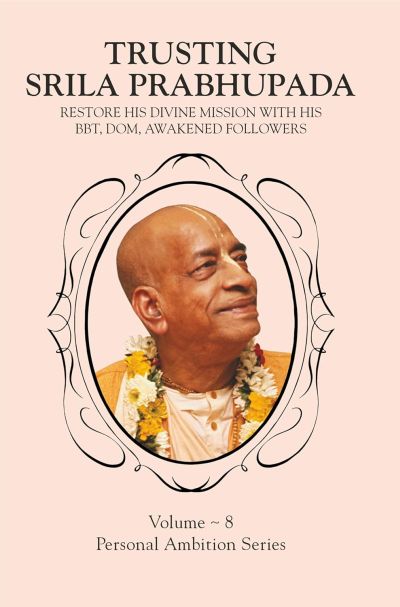
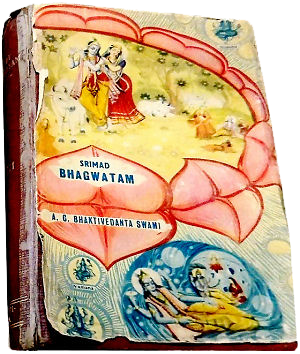
Speak Your Mind